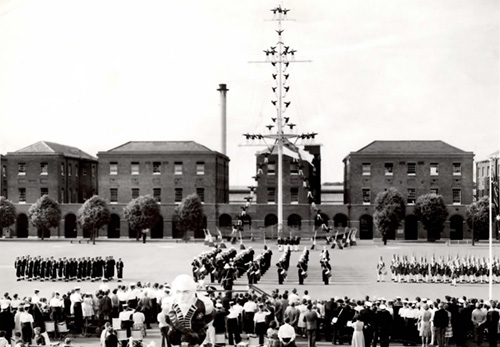
 HMS WISHART
HMS WISHART
Lord Louis Mountbatten
CO of Wishart on the China Station and in the Med
1934-6
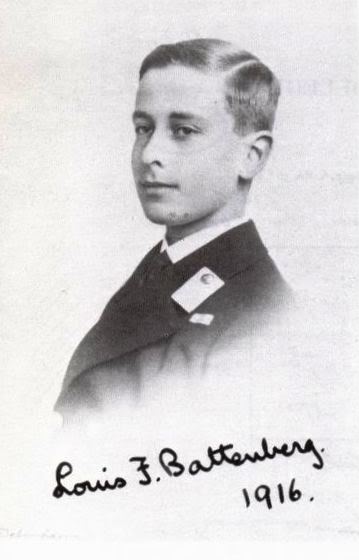 |
 |
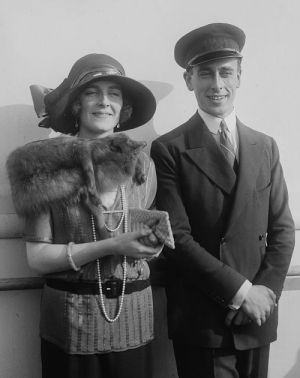 |
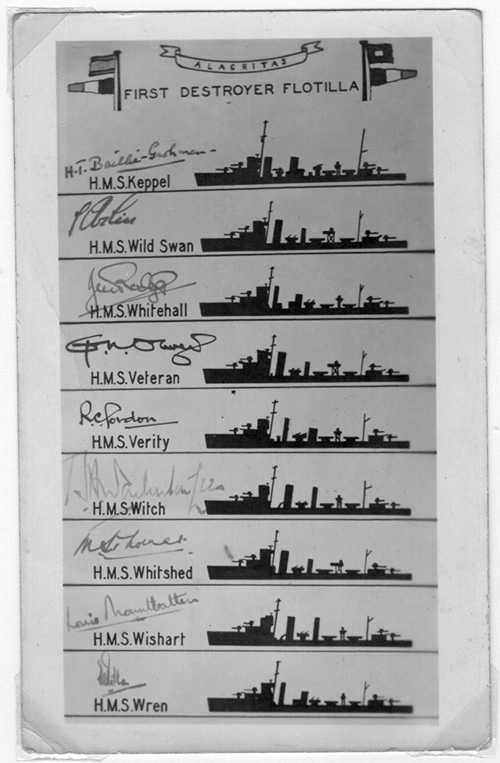
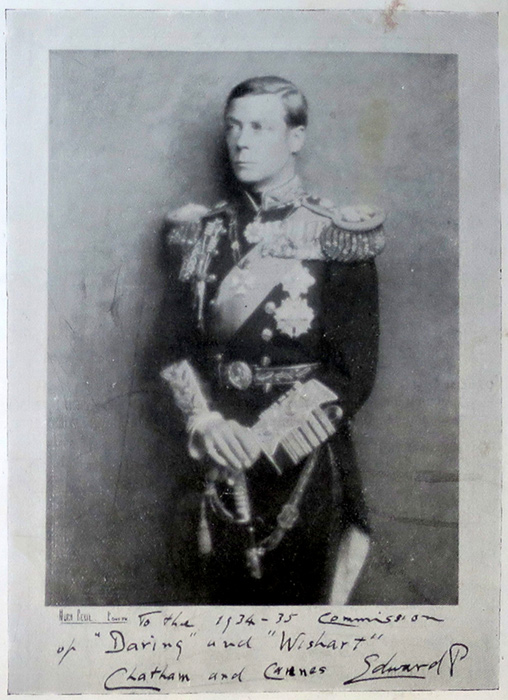 I
was lent a copy of the "Souvenir Book of the 1934 - 1936 Commission of
HMS Ships Daring & Wishart in the First Destroyer Flotilla" by Lt Cdr John
Whittleton RN (Ret). The inscribed portrait of the Prince of Wales, soon to be King Edward VIII, appears at the front. There were 160
numbered subscription copies of the leather bound edition printed by
the Times of Malta at the end of the Commission. There is a copy in the Imperial War Museum.
I
was lent a copy of the "Souvenir Book of the 1934 - 1936 Commission of
HMS Ships Daring & Wishart in the First Destroyer Flotilla" by Lt Cdr John
Whittleton RN (Ret). The inscribed portrait of the Prince of Wales, soon to be King Edward VIII, appears at the front. There were 160
numbered subscription copies of the leather bound edition printed by
the Times of Malta at the end of the Commission. There is a copy in the Imperial War Museum.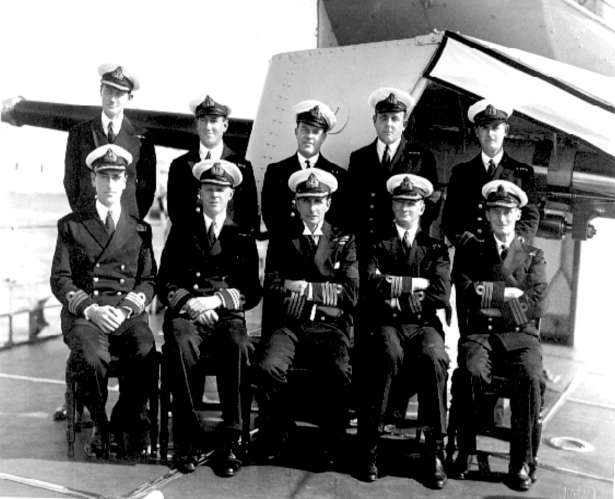 Captains of the First Destroyer Flotilla at Algeciras, April 1935
Standing from left: Lt Cdr W.G.A. Robson (HMS Wren), Lt Cdr M.S. Thomas (HMS Whitshed), Lt Cdr Gibbs (HMS Wren), Lt Cdr J.M. Rogers (HMS Whitehall), Lt Cdr R.C. Gordon (HMS Verity) Seated from left: Cdr Lord Louis Mountbatten (HMS Wishart), Cdr B.A. Warburton-Lee (HMS Witch), Captain (D1) H.T. Bailie-Grohman (HMS Keppel), Cdr Arliss (HMS Wild Swan), Cdr G.N. Oliver (HMS Veteran) Warburton-Lee won the Victoria Cross in the first Battle of Narvik, 10 April 1940 Courtesy of the Imperial War Museum (Negative Number HU 57465) | 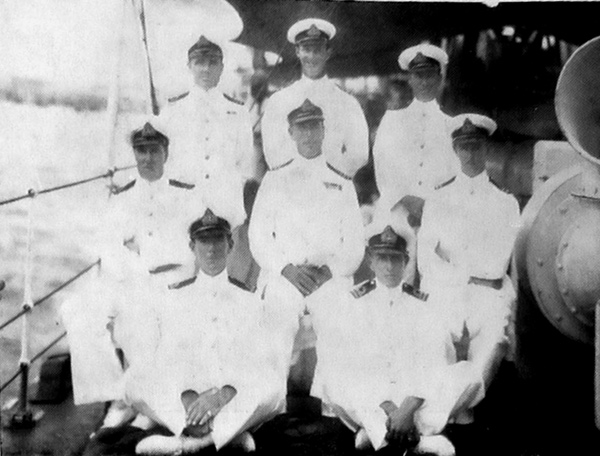 HMS Wishart's Officers
Rear row from left: Wt Eng S.J.H. Mardon, Lt N.R. Murch RNR, Gnr. (T) R.M. Browne Middle row from left: Lt R.W.F. Northcott, Cdr Lord Louis Mountbatten, Lt E.G. Roper Front Row from left: Sub Lt P.H.J. Southby, Lt W. Whitworth From the Souvenir Commissioning Book for HMS Daring and HMS Wishart 1934-6 Courtesy of John Whittleton |
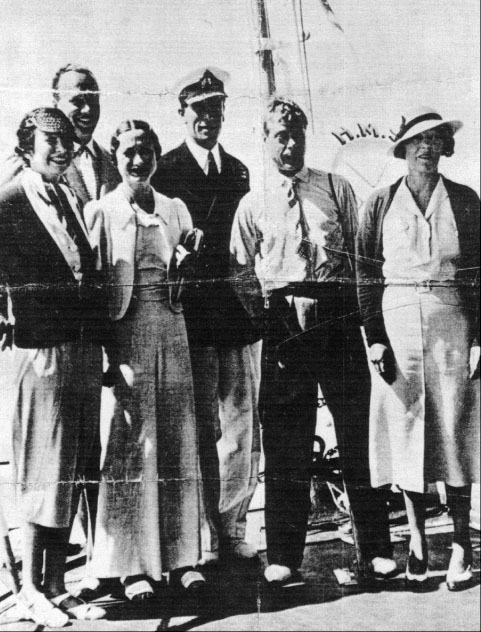 Mountbatten was determined that Wishart would win The Gunnery Trophy in June and trained hard, placing accuracy before rate of fire.
Mountbatten was determined that Wishart would win The Gunnery Trophy in June and trained hard, placing accuracy before rate of fire.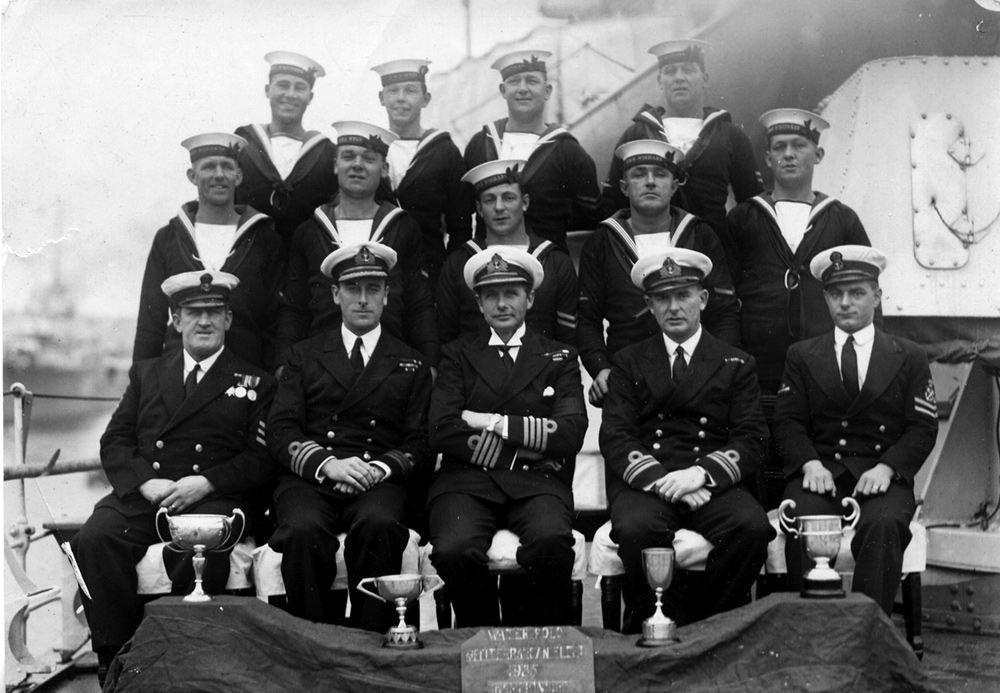
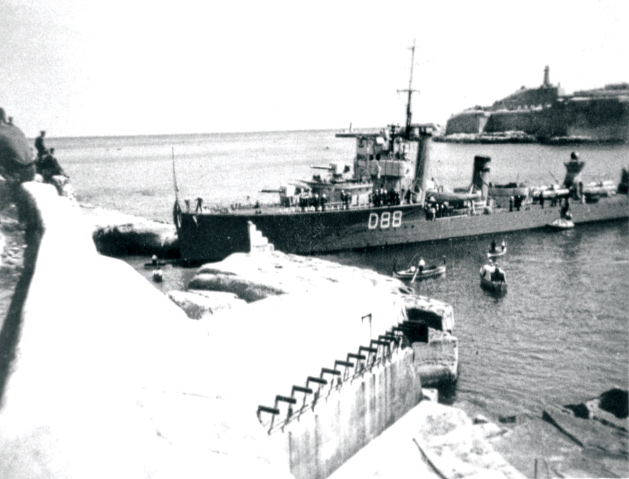 HMS Wren aground off Tigne Point Malta
Photographed by Norman Hollis of HMS Veteran |
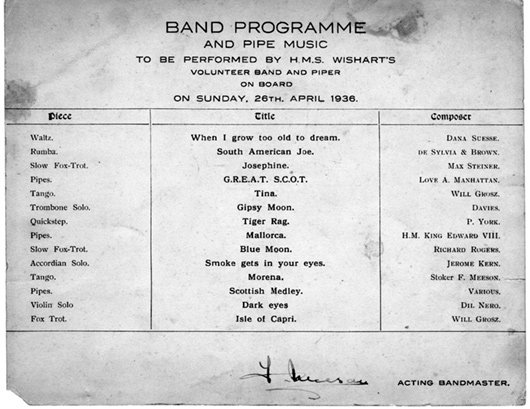 Mallorca was composed by HM King Edward VIII and Morena , a tango, by Stoker Meeson
The Bandmaster, Stoker Meeson, signed the Programme |
